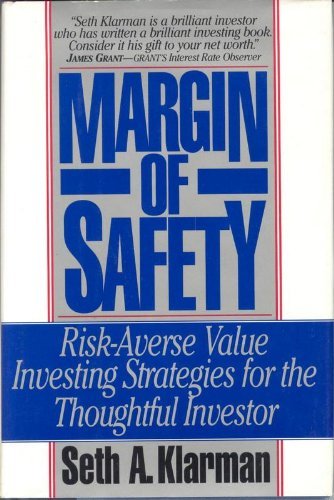Petit extrait du livre de Seth Klarman, Margin of Safety, (vendu à 800 euros sur Amazon). Dilemme entre investir et ne pas investir, un équilibre entre retour sur investissement et risque, le coût d’opportunité de rien faire avec son argent (mise à part le dépenser pour les cigales, pour ceux qui n’ont pas le choix ou ceux dont l’investissement n’est pas une priorité)
When investors do not demand compensation for bearing illiquidity, they almost always come to regret it.
Most of the time liquidity is not of great importance in managing a long-term-oriented investment portfolio. Few investors require a completely liquid portfolio that could be turned rapidly into cash. However, unexpected liquidity needs do occur. Because the opportunity cost of illiquidity is high, no investment portfolio should be completely illiquid either. Most portfolios should maintain a balance, opting for greater illiquidity when the market compensates investors well for bearing it.
A mitigating factor in the tradeoff between return and liquidity is duration. While you must always be well paid to sacrifice liquidity, the required compensation depends on how long you will be illiquid. Ten or twenty years of illiquidity is far riskier than one or two months; in effect, the short duration of an investment itself serves as a source of liquidity.
…In times of general market stability the liquidity of a security or class of securities can appear high. In truth liquidity is closely correlated with investment fashion. During a market panic the liquidity that seemed miles wide in the course of an upswing may turn out only to have been inches deep. Some securities that traded in high volume when they were in favor may hardly trade at all when they go out of vogue.
When your portfolio is completely in cash, there is no risk of loss. There is also, however, no possibility of earning a high return. The tension between earning a high return, on the one hand, and avoiding risk, on the other, can run high. The appropriate balance between illiquidity and liquidity, between seeking return and limiting risk, is never easy to determine.
Quand discipline, patience et jugement sont tellement nécessaires mais si difficile à pratiquer. Appliquer une marge de sécurité. Pourquoi ?
Value investors seek a margin of safety, allowing room for imprecision, bad luck, or analytical error in order to avoid sizable losses over time. A margin of safety is necessary because… • Valuation is an imprecise art • Future is unpredictable, and • Investors are human and do make mistakes.
Pour ceux qui sont intéressés, voici le livre complet.




Leave a Reply